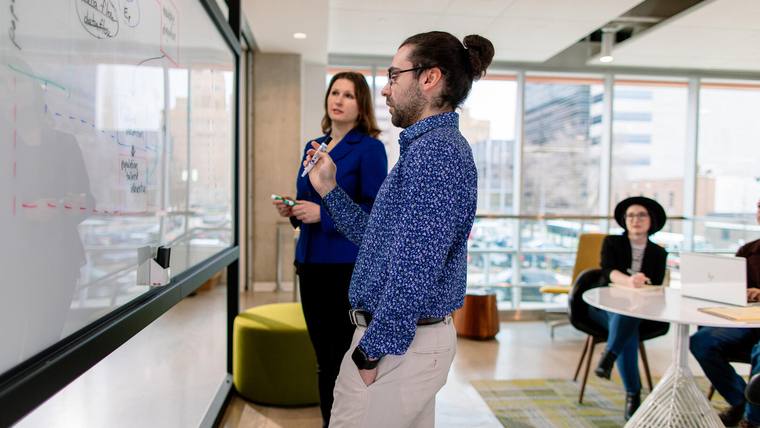
Biotherapeutic medicines focus on rebuilding health while treating symptoms of disease. It’s an emerging area of medicine aimed at stopping disease on a molecular level. The heart of this healthcare transformation is collaboration between physicians, scientists, academia and industry to deliver new cell and gene therapeutics that harness the body’s ability to regenerate and heal.
Biotherapeutics are made from living organisms such as blood, cells, tissues, genes or enzymes and have the potential to provide targeted healing with few side effects. Chimeric antigen receptor-T cell therapy (CAR-T cell therapy), a therapy in which a patient’s T cells are engineered to stop cancer, is an example of a biotherapeutic.
Innovation districts near Mayo Clinic — Discovery Square in Rochester, Discovery Oasis in Phoenix and the recently initiated Discovery Coast on the Mayo Clinic campus in Jacksonville — are fertile grounds for growing biotech businesses working to offer new biotherapeutics to patients with previously untreatable conditions.
The Discovery hubs attract world-class researchers and industry trailblazers who together advance the newest medical breakthroughs to early-stage clinical trials. The goal is to bring biotherapeutics to market for patients with unmet needs.
“Biotech companies work side-by-side in the same building as Mayo Clinic clinicians and researchers. This close relationship makes for greater innovation, which could mean lifesaving treatments reach markets — and patients — more quickly,” says Chris Schad, director of business development for Destination Medical Center, which manages Discovery Square. “Collaboration is a lot easier when you see each other every day.”
Mayo Clinic’s Center for Regenerative Biotherapeutics is at the forefront of the movement toward biologically based medicines. The center is in Discovery Square, a 16-block research corridor in Rochester that anchors Minnesota’s Destination Medical Center economic development initiative.
Julie Allickson, Ph.D., director of advanced biotherapeutics at the Center for Regenerative Biotherapeutics, says research hubs like Discovery Square and Discovery Oasis present unique opportunities for biotech pioneers. During a presentation at the International Society for Cell and Gene Therapy conference in Vancouver, she outlined possibilities for collaboration.
“Mayo Clinic is investing in state-of-the art biomanufacturing facilities with process and analytical development space to prepare discoveries for mass production. Our infrastructure is based on industry best practices so we can seamlessly transfer promising technologies to industry collaborators for commercialization,” says Dr. Allickson. “We have a wide range of technologies in the biomanufacturing pipeline to prepare for clinical trials for complex conditions, such as cancer and diseases of the immune system.”
Dr. Allickson is also the Otto Bremer Trust Director of Biomanufacturing at the Center for Regenerative Biotherapeutics.
The Center for Regenerative Biotherapeutics is also poised to work with industry leaders in Discovery Oasis, a 120-acre development for biotech entrepreneurs next to Mayo Clinic in Arizona. Recruitment is underway to attract life sciences companies interested in accelerating Mayo Clinic discoveries that could potentially redefine patient care for future generations.
“Mayo Clinic is a trusted name in healthcare. It has been ranked the top hospital in the country many times by U.S. News & World Report. Whether you’re in Phoenix, Rochester or Jacksonville, industry collaborators would have access to working with the incredible talent and world-class innovators at Mayo Clinic,” says Aric Bopp, executive director of Discovery Oasis. “Alliances with biotech companies that choose to locate near Mayo Clinic could expedite healthcare inventions. We want to work with them to deliver new cures for patients.”
Mayo Clinic recently initiated a third innovation district, Discovery Coast, which will be located at Mayo Clinic in Florida. Site planning efforts and market analysis within the southeast region and the Jacksonville market are underway.
The convergence of science, academia and industry in innovation districts could accelerate the movement of biologic medicines from the bench to the bedside. Together, the different groups strive to address unmet patient needs by reducing the time to market and navigating the regulatory landscape more efficiently. Ultimately, the hope is to create next-generation biotherapeutics for patients who currently have no therapeutic options.
####
Related stories:
Ultra-clean rooms are shaping the next generation of biotherapeutics
Advancing patient care with biologics
